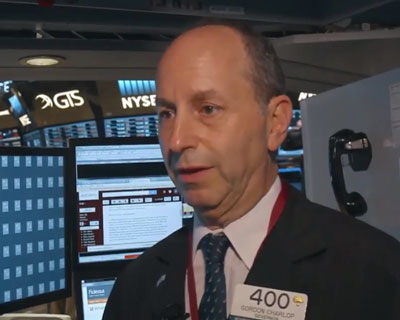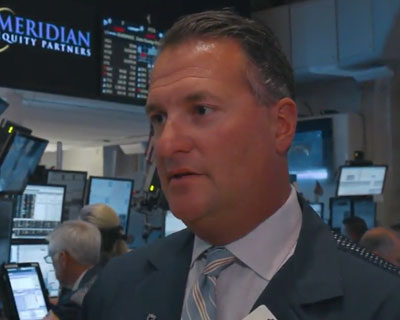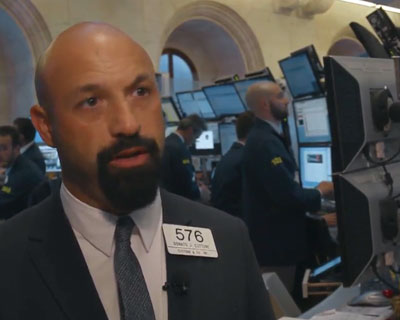
NYSE Auctions
The Closing Auction
The NYSE closing auction is the primary liquidity event for institutional and retail investors. The closing price is crucial as it represents the universal market data reference price for all equity-linked products including mutual funds, Exchange Trade Products (ETPs) and derivatives.
Request more information on the benefits of participating in NYSE's closing auction
Benefits
- Single largest liquidity event of the day: NYSE closing auction trades $33.8 billion per day, on average, representing about 10% of daily volume in NYSE-listed securities. On major option expiration and index rebalance days, the close can account for over 35% of daily volume.
- Significant block activity at stable closing prices: Significant liquidity and anonymity at the close help to minimize the market impact costs of large trades. On average, comparing the closing price to the Volume Weighted Average Price (VWAP) of the last two minutes, S&P 500 stocks have a price change of less than 0.053% with an average auction size of $37 million per security.
- Large floor participation: The community of floor brokers and Designated Market Makers (DMMs) contribute about 50% of close liquidity, on average.
- Transparency: Between 3:50pm and 4:00:00pm, auction information is disseminated every second, including pair-off volume, order imbalance volume, closing-only interest price, and indicative closing prices. This information is available through major data providers, including Bloomberg® and Thomson Reuters®.
Additional Facts
- DMMs commit capital and improve fills on market and marketable limit orders
- Market-On-Close and Limit-On-Close orders can be entered without restriction between 6:30am and 3:50pm
- Market-On-Close and Limit-On-Close orders can be entered between 3:50pm and 3:59:59pm to offset any Regulatory Imbalance of 50,000 shares or greater
- Unexecuted limit orders on the book are eligible to trade in the closing auction
- Closing offset limit orders can be entered to offset any imbalance
Hear what our Floor Brokers have to say about delivering value to NYSE customers
Gordon Charlop
Managing Director, Rosenblatt Securities
“The buy-side money manager has to make sure that they remain anonymous and that their intentions are not given up to the street. They don’t want to pass up the opportunity to be part of the biggest liquidity event available to them…anywhere, on any exchange.
Therefore they have to send a broker into the crowd to be able to source that liquidity in a professional manner. If you’re not part of that trade, if you decide that you don’t want to avail yourself of a floor broker, you’re missing out on a tremendous opportunity.”

Jonathan Corpina
Senior Managing Partner, Meridian Equity Partners
"As a floor broker we have the ability to represent and execute our clients’ order flow all the way up to and including the Closing Bell. That gives us the ability to make decisions very late in the day.
There are some order types where you have to commit your closing participation at an earlier time. But when using a floor broker you’ve got that ability to add, to change your limits or cancel an order all the way up to and including the Closing Bell.”

Donato Cuttone
Cuttone & Company
“We provide fully electronic automated access to the point of sale, and we also can provide manual representation at the point of sale. So because we have this discretion at the point of sale, we are able to provide a multitude of different execution opportunities at the market, or at a limited price – and when we are participating at the market or limited prices, our point of sale presence also gives us the ability to participate with parity, which gives us a more fair and equitable split at the point of sale so that our client is not sitting in the queue, but is participating at a price, at his limit.”

Gordon Charlop
Managing Director, Rosenblatt Securities
“The buy-side money manager has to make sure that they remain anonymous and that their intentions are not given up to the street. They don’t want to pass up the opportunity to be part of the biggest liquidity event available to them…anywhere, on any exchange.
Therefore they have to send a broker into the crowd to be able to source that liquidity in a professional manner. If you’re not part of that trade, if you decide that you don’t want to avail yourself of a floor broker, you’re missing out on a tremendous opportunity.”

Jonathan Corpina
Senior Managing Partner, Meridian Equity Partners
"As a floor broker we have the ability to represent and execute our clients’ order flow all the way up to and including the Closing Bell. That gives us the ability to make decisions very late in the day.
There are some order types where you have to commit your closing participation at an earlier time. But when using a floor broker you’ve got that ability to add, to change your limits or cancel an order all the way up to and including the Closing Bell.”

Donato Cuttone
Cuttone & Company
“We provide fully electronic automated access to the point of sale, and we also can provide manual representation at the point of sale. So because we have this discretion at the point of sale, we are able to provide a multitude of different execution opportunities at the market, or at a limited price – and when we are participating at the market or limited prices, our point of sale presence also gives us the ability to participate with parity, which gives us a more fair and equitable split at the point of sale so that our client is not sitting in the queue, but is participating at a price, at his limit.”
